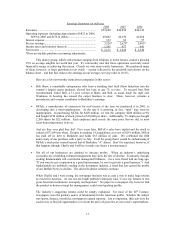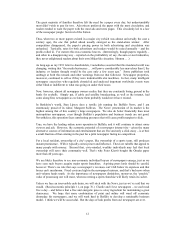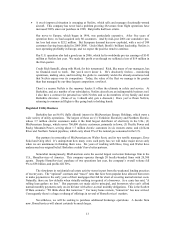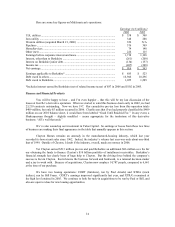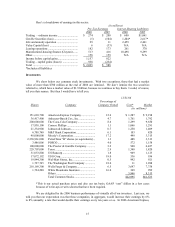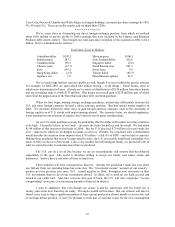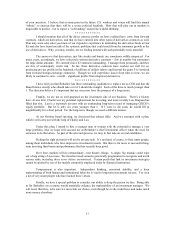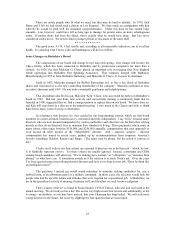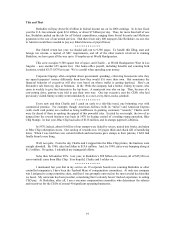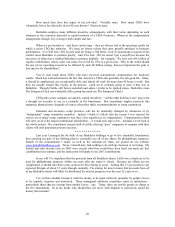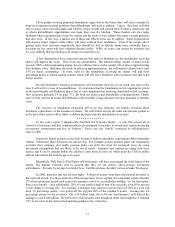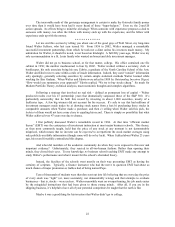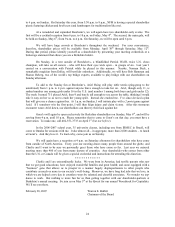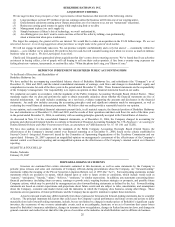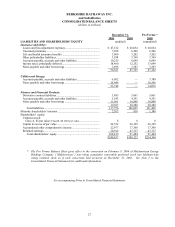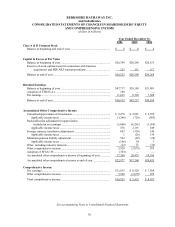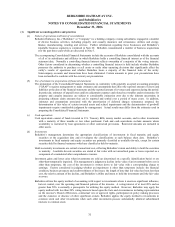Berkshire Hathaway 2006 Annual Report Download - page 22
Download and view the complete annual report
Please find page 22 of the 2006 Berkshire Hathaway annual report below. You can navigate through the pages in the report by either clicking on the pages listed below, or by using the keyword search tool below to find specific information within the annual report.Those people favoring perpetual foundations argue that in the future there will most certainly be
large and important societal problems that philanthropy will need to address. I agree. But there will then
also be many super-rich individuals and families whose wealth will exceed that of today’ s Americans and
to whom philanthropic organizations can make their case for funding. These funders can then judge
firsthand which operations have both the vitality and the focus to best address the major societal problems
that then exist. In this way, a market test of ideas and effectiveness can be applied. Some organizations
will deserve major support while others will have outlived their usefulness. Even if the people above
ground make their decisions imperfectly, they should be able to allocate funds more rationally than a
decedent six feet under will have ordained decades earlier. Wills, of course, can always be rewritten, but
it’ s very unlikely that my thinking will change in a material way.
A few shareholders have expressed concern that sales of Berkshire by the foundations receiving
shares will depress the stock. These fears are unwarranted. The annual trading volume of many stocks
exceeds 100% of the outstanding shares, but nevertheless these stocks usually sell at prices approximating
their intrinsic value. Berkshire also tends to sell at an appropriate price, but with annual volume that is only
15% of shares outstanding. At most, sales by the foundations receiving my shares will add three
percentage points to annual trading volume, which will still leave Berkshire with a turnover ratio that is the
lowest around.
Overall, Berkshire’ s business performance will determine the price of our stock, and most of the
time it will sell in a zone of reasonableness. It’ s important that the foundations receive appropriate prices
as they periodically sell Berkshire shares, but it’ s also important that incoming shareholders don’ t overpay.
(See economic principle 14 on page 77.) By both our policies and shareholder communications, Charlie
and I will do our best to ensure that Berkshire sells at neither a large discount nor large premium to intrinsic
value.
The existence of foundation ownership will in no way influence our board’ s decisions about
dividends, repurchases, or the issuance of shares. We will follow exactly the same rule that has guided us
in the past: What action will be likely to deliver the best result for shareholders over time?
* * * * * * * * * * * * *
In last year’ s report I allegorically described the Gotrocks family – a clan that owned all of
America’ s businesses and that counterproductively attempted to increase its investment returns by paying
ever-greater commissions and fees to “helpers.” Sad to say, the “family” continued its self-destructive
ways in 2006.
In part the family persists in this folly because it harbors unrealistic expectations about obtainable
returns. Sometimes these delusions are self-serving. For example, private pension plans can temporarily
overstate their earnings, and public pension plans can defer the need for increased taxes, by using
investment assumptions that are likely to be out of reach. Actuaries and auditors go along with these
tactics, and it can be decades before the chickens come home to roost (at which point the CEO or public
official who misled the world is apt to be gone).
Meanwhile, Wall Street’ s Pied Pipers of Performance will have encouraged the futile hopes of the
family. The hapless Gotrocks will be assured that they all can achieve above-average investment
performance – but only by paying ever-higher fees. Call this promise the adult version of Lake Woebegon.
In 2006, promises and fees hit new highs. A flood of money went from institutional investors to
the 2-and-20 crowd. For those innocent of this arrangement, let me explain: It’ s a lopsided system whereby
2% of your principal is paid each year to the manager even if he accomplishes nothing – or, for that matter,
loses you a bundle – and, additionally, 20% of your profit is paid to him if he succeeds, even if his success
is due simply to a rising tide. For example, a manager who achieves a gross return of 10% in a year will
keep 3.6 percentage points – two points off the top plus 20% of the residual 8 points – leaving only 6.4
percentage points for his investors. On a $3 billion fund, this 6.4% net “performance” will deliver the
manager a cool $108 million. He will receive this bonanza even though an index fund might have returned
15% to investors in the same period and charged them only a token fee.
21


